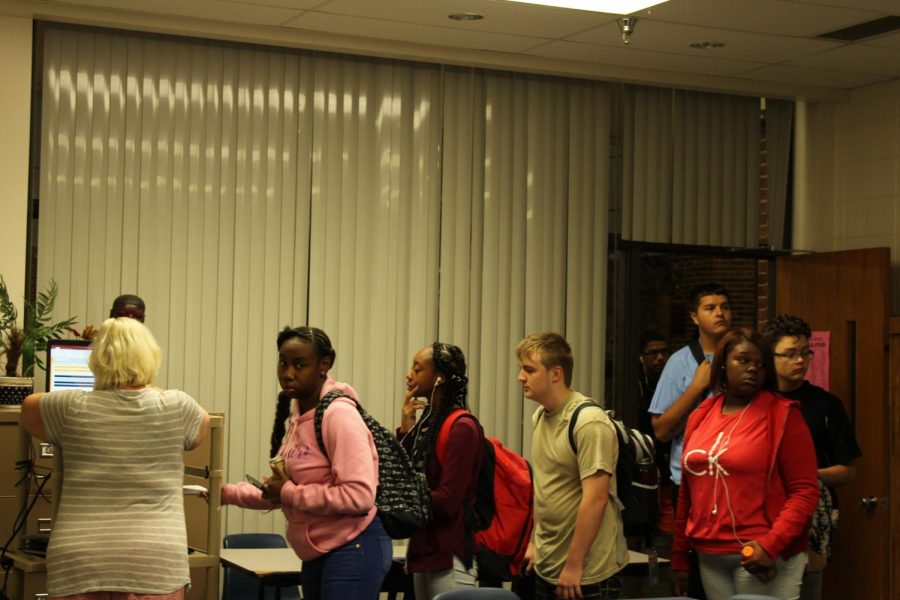North tackles tardiness
November 1, 2018
Omaha Public Schools is putting more emphasis on attendance for the 2018 – 2019 school year by incorporating new methods for tardy consequences. Specifically, OPS is shifting their focus on “encouraging student promptness to class and communication with parents regarding tardy issues,” according to the student handbook.
At Omaha North, specific tardy practices and rules have been added in addition to the District Policies. Administrator Kathy Lee introduced these new practices, giving reasoning for why these changes encourage student attendance
more than the previous practices.
“Essentially, the goal is to have kids to class on time with an incentive system that has some communication and accountability, that’s the goal of the district, too,” Lee said.
The new tardy system at Omaha North allows students who arrive late to class to be able to enter the classroom instead of having to leave to go to a tardy station. The teacher is then responsible for recording when the student comes in, and the students’ minutes begin to accumulate.
There are different consequences for the amount of tardies a student accumulates throughout the semester. This is a change from last year as students would have immediately been given lunch detentions.
“It’s more efficient, having us leave class to go to a tardy station after already coming in late did nothing but make us miss more class time,” Kyrii Richardson, 12, said.
Some old policies, such as random hall sweeps and lunch detentions will still be implemented. If students fail to serve assigned lunch detentions and Co-op detentions, the detention staff will notify the assigned administrator for administrative intervention, also known as SAS and SSC (Student Success Center).
“It’s not very inviting to make an effort to get to class knowing you’re going to be late and then being told to leave. Having more immediate punitive consequences isn’t going to change the fact that the student had an issue that made them 30 seconds late, but it does make them miss more class,” Lee said.
“Dead Time,” where passes are not able to be given out of class during the first and last 15 minutes of a period, is also still in effect at Omaha North High. Dead Time was created to encourage students to first not miss important beginning instruction, and to also clear out hallways right after and right before the bells ring.
“I believe we should be able to go use the rest room during dead time because it’s a better time to go rather than in the middle of class,” Richardson said.
The clipboards for bathroom passes are also color coded based on the floor of the classroom. Blue Clipboards are for the basement and first floor, white clipboards are for the second floor, and yellow clipboards are for the third floor. With this system, security and administrators can ensure students are not abusing their passes by being on the wrong floor.
The small white “Pupils Pass Within Building” pass is also still available for students who may be out of class for an extended period of time, like the nurse’s office or the GRC. The purple “Media Center/Computer Center” passes are also still available for students who need to visit these areas during work time.
“It’s more than a policy where at two tardies this happens and at four tardies this happens, it’s really a whole philosophy and it’s something that we struggle with. It’s important to us that our students want to be here and that they are engaged and successful, and attendance is part of that,” Lee said.

Graphic by Nadia Spurlock



